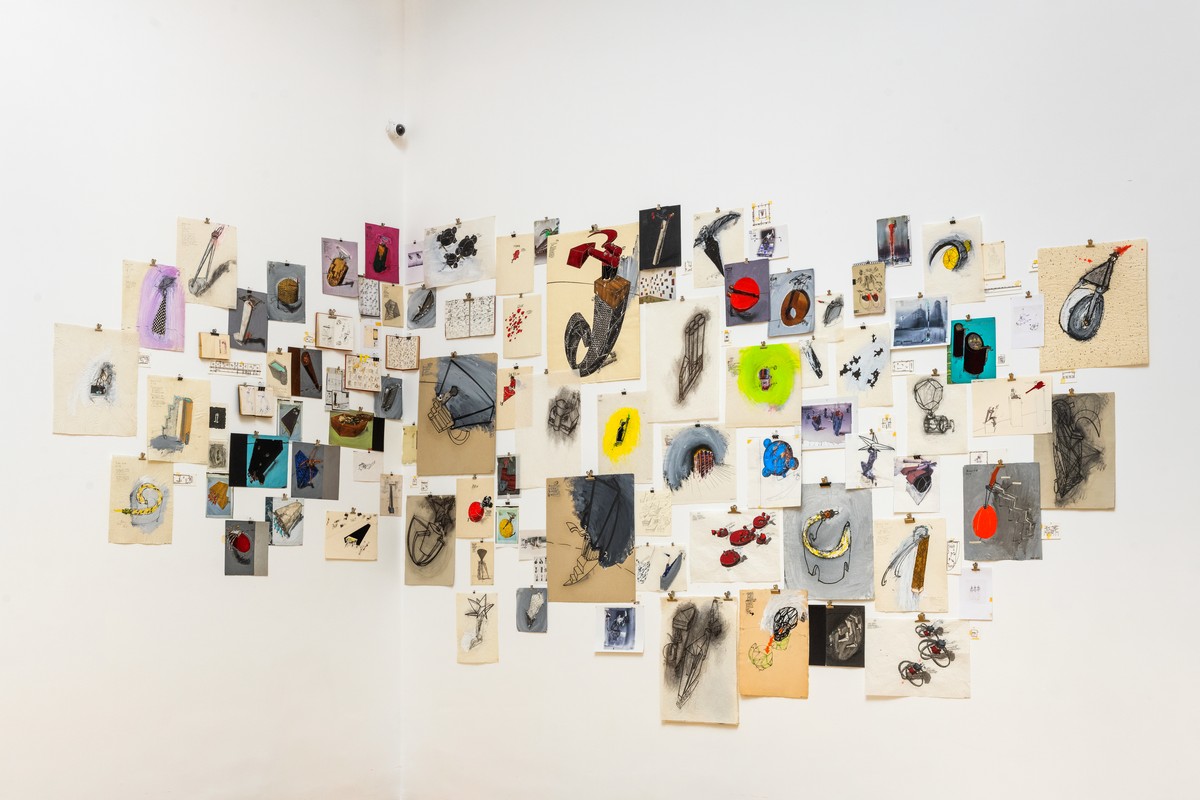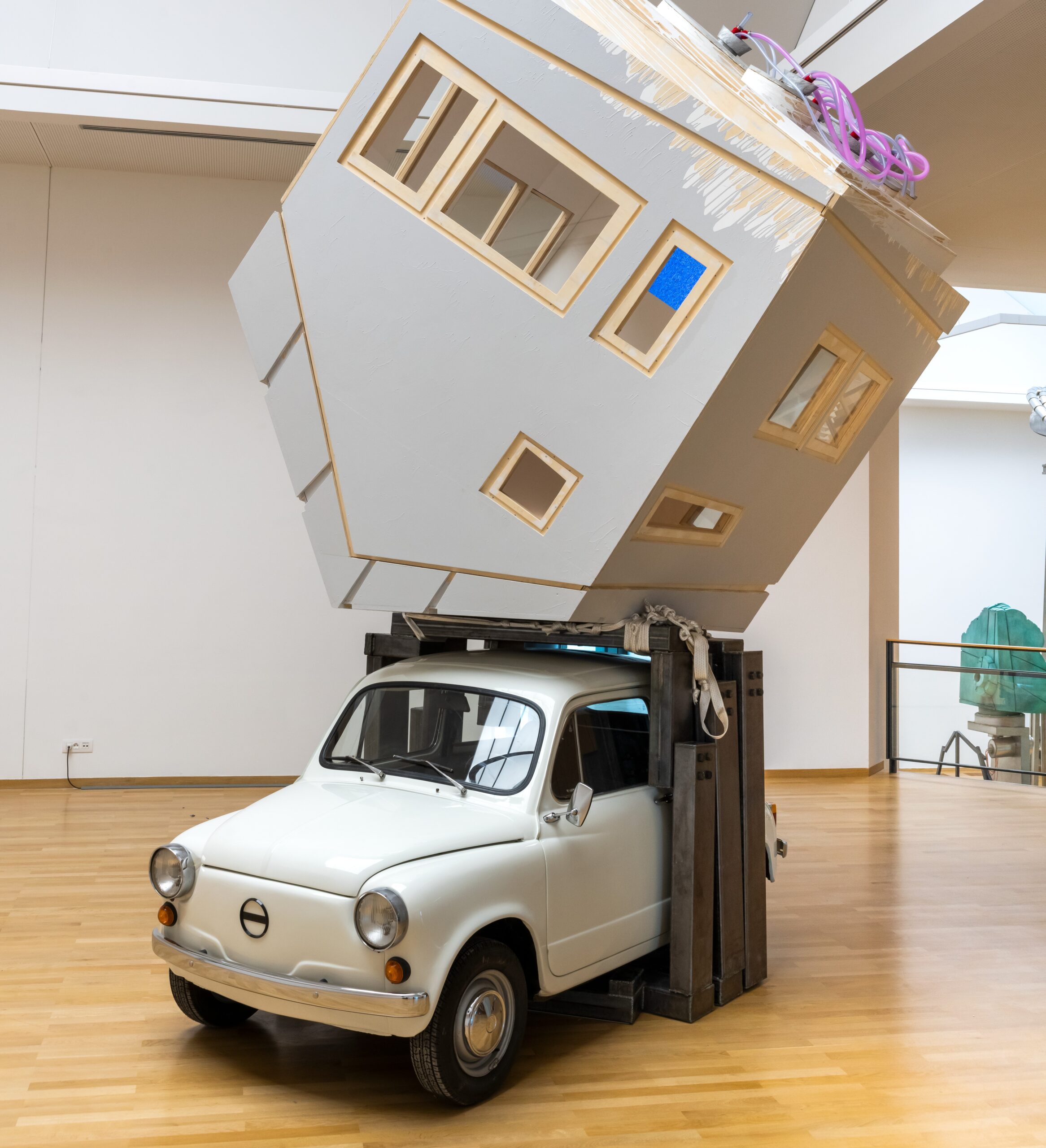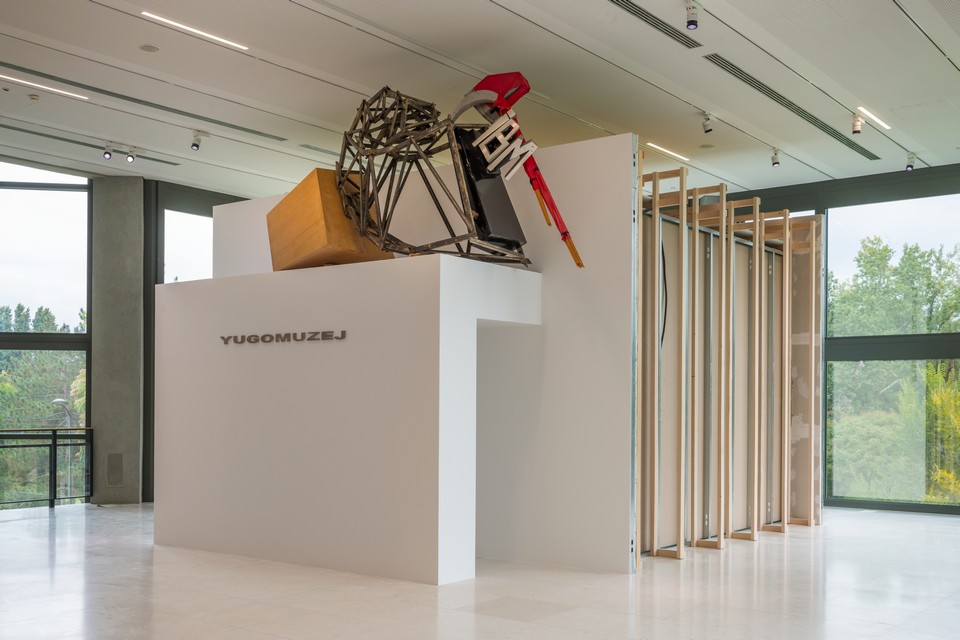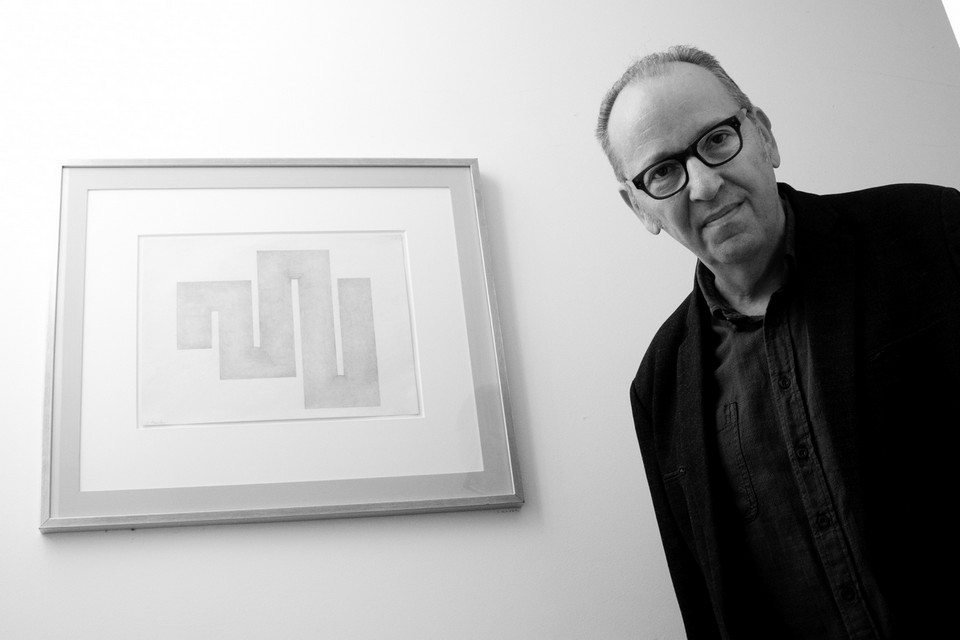Our legacy is not what we have criticized but what we created ourselves

While the large-scale exhibition with the unusual name “Unreliable Narrator” is in progress at the Museum of Contemporary Art (MSU) in Belgrade, we spoke with its author, Mrdjan Bajić, a well-known representative of the Serbian contemporary art scene, a sharp opponent of single-mindedness, a leftist and an atheist, a Yugoslav and a harsh critic of contemporary society who knows that changes come only through work.
The contemporary art scene in Serbia seems impressive. As one of its most important contributors, how would you describe the relationship between Serbia and contemporary art, especially in the context of ever-increasing traditionalism in our society, which is also becoming less and less tolerant?
Judging by the individual exhibitions opening this autumn, I would concur with you – everything seems impressive and condensed, but if you judge by the taste that manifests itself in new monuments, then it becomes clear that the dominant public taste in visual art is quite retrograde. It’s as if the century of modernism didn’t exist at all – both in cemeteries and in public squares. Again, on the other hand, the fact that 10,000 visitors who have come to the MSU in Ušće to see my exhibition, eight weeks since it opened, bought a ticket and perused the contemporary artwork with considerable attention seems to annul the aforementioned judgement. Or maybe there are enough of us to live in parallel worlds and that’s OK.
Now is the time for contemporary art to enter through the big door, without constantly having to tiptoe and apologize – “We are sorry but we have something to tell you which is maybe important to you too. But we really enjoy it when you ignore us.”
In regard to sculpting, my work is partly marked by the tradition that emerges from (Ivan) Meštrović’s pathetic narrative – it was the first art I encountered as a boy. Then came (Olga) Jevrić’s pure plastic dynamism, because it was the first sculptural artwork that I consciously chose to love. The point here is not what shaped me as an artist, but, in their respective eras, both Meštrović and (Olga) Jančić destroyed the traditional and conservative, and today they are considered a tradition in this community, without which it would not be the same, while some die-hard traditionalists from their era have been completely forgotten.
Does the art world recognize the Serbian contemporary art scene and artists?
Yes, but only through the individual activities of individual artists. Even now, a large number of young artists and a big group of middle-aged artists have blazed their own trails that are noticeable on the European gallery and museum scene. They would need selective but more intensive support for projects that make Serbian art visible on a wider scale. Currently, there are no institutional models for that. According to the available information, private galleries also achieve significantly more impressive results than the still unreformed system of social galleries and institutions. Self-organized art institutions have long been an important link, but the quite active Association of Fine Artists of Serbia (ULUS) represents an unprecedented novelty in the past fifty years.
The paths of art have always intersected with the paths of money because it is the necessity of its productive existence, but at the same time, it must certainly not become the master who directs or limits the view
There is no question about (our country) conducting a serious cultural policy that would present the country’s art scene systematically, just like Croatia or the Czech Republic. I dare not mention Germany or France in this context. Our last appearance in Venice could serve as a good format. A professional and competent jury has made a reasonable and fair decision, and then with visible financial support, regardless of incidental problems. Judging by our well-designed and impressive pavilion, all in all, this was an excellent and complete campaign. However, much more is needed outside the context of international biennials. At one point in Paris, during the Days of Croatian Culture event, the Croats exhibited Apoxyomenes from Lošinj in the ancient history section of the Louvre, Meštrović’s work was exhibited in the Rodin Museum, while the artwork of Picelj, Stilinović and Očko found its way to the most important Parisian institutions of contemporary art. Devising and implementing such a campaign is unthinkable and unattainable for our government. But these are just my lowly confabulations at the time of the Kosovo crisis, mindless reality shows and assassinations. Silly me! Normal activities are not on the agenda here, but now that you have already asked me, let’s not forget that normality should exist.
Performance art is becoming increasingly popular. How do you describe the paradox that global society is increasingly polarized and closed into its microworlds, while at the same time the popularity and understanding of an artistic expression that requires a great mental capacity, openness and tolerance is growing?
Marina Abramović finally became a part of the Serbian tradition. Even the conventional Belgrade had to admit that that was art – intimidated by the success and energy that the artist brought to the exhibition at MSU, for the first time after forty years. If the community here had recognized that, if it hadn’t been so pathetically traditionalist and overbearing, so superior in its inferiority, and if it had acquired the artist’s works on time, people would come to Belgrade to visit the Marina Abramović Museum, to visit the sites where her early artwork came about, and not just to spend the night away partying at river clubs at half-price. Italy is rich today because they have not made such mistakes since the Renaissance. They know that creativity is a treasure and they export shoes and not people. Otherwise, I don’t have enough knowledge to validate your statement that performance art is becoming increasingly popular. Certainly, in the last ten generations of students, with whom I worked, I have found quite a few excellent, mostly female performance artists.

How does sculpting fare today? How different is a modern sculpture from an ancient one? We are not referring here to sculpture as a reflection of society but to techniques, materials, and forms.
An acquaintance of mine, a Dutch woman, has been working on a study of parallels between the development of tools and technologies in relation to the development of art, and she has also demonstrated literal causality. Of course, photography, welding techniques, polyester resins and the latest 3D printing have changed sculptural procedures and enabled a whole range of newly generable forms, but the question of concept and meaning, which is shaped by thought and not technology, remains current. I think that the sculptural scene if by it we mean the parentage of all types of spatial installations and every three-dimensional design, which is what I’m referring to here, is very potent in the current era, and for me, the most interesting.
What is the secret behind the success of your Yugomuzej project? Why is the Slavija Square the ground zero for this project?
From the regional point of view, this is a very unnecessary project because, except in Belgrade, it has never been exhibited anywhere in the former Yugoslav republics, which, in a way, speaks to its success in relaying some unpleasant facts, albeit cheerfully. On the other hand, at numerous international exhibitions, there was still a certain limit due to local references. So, in the end, it turns out that the project is intended for the region which really doesn’t need it. However, it seems that numerous people need the current and rather impressive presentation at MSU. As far as Slavija is concerned, I think it is quite logical for this completely utopian and unrealizable project that it wants to make an imaginary mark on the biggest square that has been built in decades, in the largest city of the former Yugoslavia. And what was actually built? A singing pool!
Does contemporary art in Serbia have an audience or maybe in this day and age, we should say its buyers and consumers? Is art today enjoyed or is it consumed and bought?
Why does your question contain the ‘or’ word? You are asking this question in your capacity as a journalist for which you are, of course, paid. Does that imply that you can’t enjoy your work and do it with strong personal conviction? The paths of art have always intersected with the paths of money because it is the necessity of its productive existence, but at the same time, it must certainly not become the master who directs or limits the view.

Your ongoing exhibition at the Museum of Contemporary Art in Belgrade is called “Unreliable Narrator”. How so?
The title somehow got stuck to the exhibition and the time in which the exhibition takes place. The title also did exactly what I wanted – it connected very different time capsules and different media statements included in the exhibition. Plus, it attracts attention. So, my answer to your question is quite rehearsed – an unreliable narrator is, first and foremost, intentionally unreliable, while allowing his storytelling to be completely constrained by a strong emotional connection to the subject, his perception therefore potentially skewed, his political views distracting and often wrong, and his ability to see the bigger picture largely narrow. However, neither theoretically nor empirically has it been proven that such an “unreliable narrator” actually does not communicate the possible truth. Unreliability is therefore not necessarily discrediting. Despite the omnipresent double-mindedness, it is possible to search independently, by personal deduction, unreliably and waywardly, even if sometimes wrongly, but persistently developing trust in one’s own research.
You recently became a corresponding member of SANU, which is somewhat surprising considering that your political and lifestyle views are quite at odds with the dominant view within the Academy. What is the position of artists and art in general in today’s Serbia, which, unfortunately, is not a good example of human freedom?
You think that because I am a Yugoslav, an atheist, a leftist and a non-Russophile. You know, joining SANU is not like being a member of a political party at all. Why do people expect some consensus of opinion and completely common unison views from a group of such blissfully different people who do their profession with excellence?! The need for uniqueness is a phantasm usually used by the majority to silence the minority. A better way is to use reasoned dialogue without discrediting. I say yes to decent debating formats, tools of argumentation and paths of rational reasoning based on clarified facts. I have come to be an equal voice in the chorus of different people who excel in their work. Besides, the Academy is not the same as it was thirty years ago. Maybe some elites are reluctant to admit it, but that is simply not the case and that is owing to the current SANU leadership. If you live abroad and you ask something about someone, they always start by listing their qualities, while we, on the contrary, are happy to start by putting them down. That’s why our glass is always half empty.
It is easy for me, both as an artist and as a citizen, to say that today’s Serbia is undemocratic, with a terrible parliament, political parties that conduct semi-terror and an authoritarian president. Nothing will happen to me if I say that, but it won’t change anything either
In this country, we are all prone to radical criticism without having any plan on how to improve things, which is completely useless. It is easy for me, both as an artist and as a citizen, to say that today’s Serbia is undemocratic, with a terrible parliament, political parties that conduct semi-terror and an authoritarian president. Nothing will happen to me if I say that, but it won’t change anything either, except that maybe I will get applause from others, at a low starting point, who will act the same when they seize power. That’s why I’m bored of all that whining. It’s better for me to question things, even if no one likes my conclusions. Maybe that’s the freedom we all need. Different life stages bring different insights and therefore different goals – probably that’s why today it seems most important to me to find fields of work in which you can improve something in the community where you live. Our legacy is not what we have criticized but what we created ourselves. I often reiterate that if you are already living in the ice age, it doesn’t really matter to you whether it is -50°C or -10°C outside. There is still life at -10.
Is lack of freedom in society a fertilizer for art? Do you think that art would die out in a utopian society of absolute freedom?
Unfortunately, this is a completely rhetorical question, because, from the historical perspective, there will be no death of art due to prosperity or in a society of absolute freedoms. After all, such a society will never exist. The fact is that dramatic times produce, or rather encourage, and that great art is refracted through them – to paraphrase the famous sentence, uttered by Welles in The Third Man. The Italians had been warring for centuries and then created the Renaissance, while the Swiss lived in peace for centuries, and all they did was invent a cuckoo clock. This is a complicated topic, fitting more of a dissertation than an interview, but someone already said that interviews are the best way to talk about serious things superficially.
